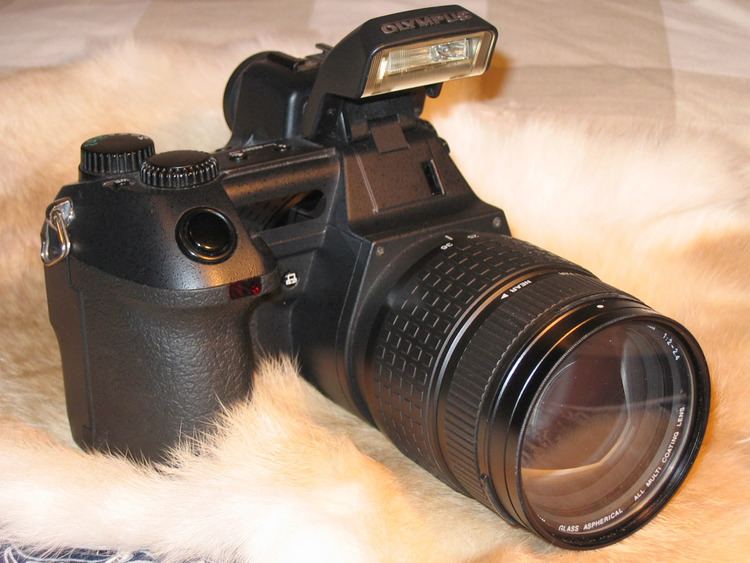Sensor 2/3-inch CCD | ASA/ISO range 80, 160, 320 | |
 | ||
Lens Fixed 35–140mm, f/2–2.4 Maximum resolution 2,240 × 1,680 (4 million) Storage CompactFlash(CF) (Type I) or SmartMedia(SM) | ||
The Olympus E-10 is a digital single-lens reflex camera with a 4.0-megapixel CCD image sensor that was introduced in 2000. Unlike most digital SLRs the camera is not a system camera – its lens is fixed to the body. It has a TTL optical viewfinder, and a 4× optical zoom lens with lens aperture f/2–2.4. Instead of a moving (reflex) mirror a beam splitting fixed (non-reflex) prism is used to split the image between the optical viewfinder and CCD. Thus it was possible to have a live view on the LCD and in parallel see the image in the TTL viewfinder.
The E-10 has a strong metallic case that weighs in at approximately 37 oz. (1050 g). It was succeeded by the 5-megapixel Olympus E-20, announced in 2001.
References
Olympus E-10 Wikipedia(Text) CC BY-SA
